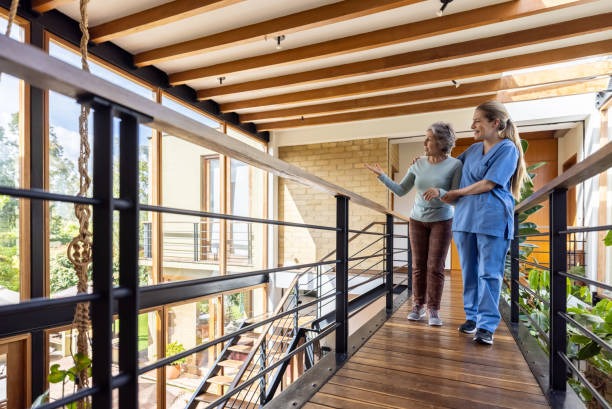Choosing the right care home for yourself or a loved one is a significant decision. With emotions running high and many factors to consider, it’s easy to feel overwhelmed. A physical visit to a potential care home can offer crucial insights beyond brochures and websites. Here’s a comprehensive guide on what to look out for when viewing care homes to help you make an informed choice.
Contents
1. First Impressions Matter
When you first arrive, take note of the overall appearance and atmosphere. Is the exterior clean and well-maintained? Are the grounds safe and accessible? Inside, does it feel welcoming, warm, and comfortable, or clinical and cold?First impressions matter.
Staff attitude is also key. Observe how they interact with residents—are they respectful, patient, and friendly? A home that feels like a community often reflects a higher quality of care.
2. Cleanliness and Safety
Hygiene is a top priority in any care environment. Look for clean floors, tidy common areas, and well-kept personal rooms. Ask how often rooms and bathrooms are cleaned. Also, check for proper safety measures, including handrails, emergency call buttons, non-slip floors, and accessible facilities for individuals with mobility challenges.
It’s also wise to inquire about infection control policies, especially in the post-COVID era, where cleanliness protocols have become even more crucial.
3. Staff-to-Resident Ratio and Qualifications
The number of staff on hand can significantly impact the level of care provided. Ask about the staff-to-resident ratio and how it changes throughout the day. A higher ratio often means more personalized attention.
Additionally, inquire about staff qualifications and ongoing training. Well-trained carers who receive regular professional development are more likely to deliver high-quality care.
4. Activities and Social Life
A care home should offer more than just basic care—it should provide residents with a fulfilling and engaging lifestyle. Ask to see the activities calendar and whether residents have a say in the events offered. From arts and crafts to movie nights and outings, variety is key.
Also, check how the home encourages social interaction. Loneliness can be a serious issue for older adults, so communal areas and social events can significantly enhance quality of life.
5. Meals and Nutrition
Food is a vital component of overall wellbeing. Ask to see a weekly menu and find out if dietary needs and preferences are accommodated. Mealtimes should be enjoyable and flexible, with food that is both nutritious and appetizing.
If possible, arrange to try a meal during your visit. Observe how food is served and whether residents appear to enjoy it.
6. Resident Wellbeing and Autonomy
Find out how the home supports residents’ independence and dignity. Are residents encouraged to make choices about their routines? Can they decorate their rooms with personal items? Look for signs that the care is tailored to individual needs rather than a one-size-fits-all approach.
You may also want to speak to current residents or their families for candid feedback on daily life in the home.
7. Location and Access
While the care inside the home is crucial, don’t overlook the importance of location. A conveniently located home makes it easier for family and friends to visit regularly. If you’re considering a care home in Exeter, for example, Langford Park offers a tranquil setting within easy reach of local amenities and transport links.
8. Cost and Contracts
Before making a commitment, ensure you understand the fees, what’s included, and any additional costs. Ask for a copy of the contract and take time to read it thoroughly. It’s a good idea to get advice from a financial advisor or solicitor if you’re unsure.
Transparency in pricing is a strong indicator of a trustworthy care provider.
Final Thoughts
Taking the time to thoroughly view and assess a care home can make all the difference in finding the right fit. Use your instincts, ask plenty of questions, and don’t rush the decision. The right care home should offer safety, dignity, comfort, and a sense of community—everything needed for a happy and supported life.



